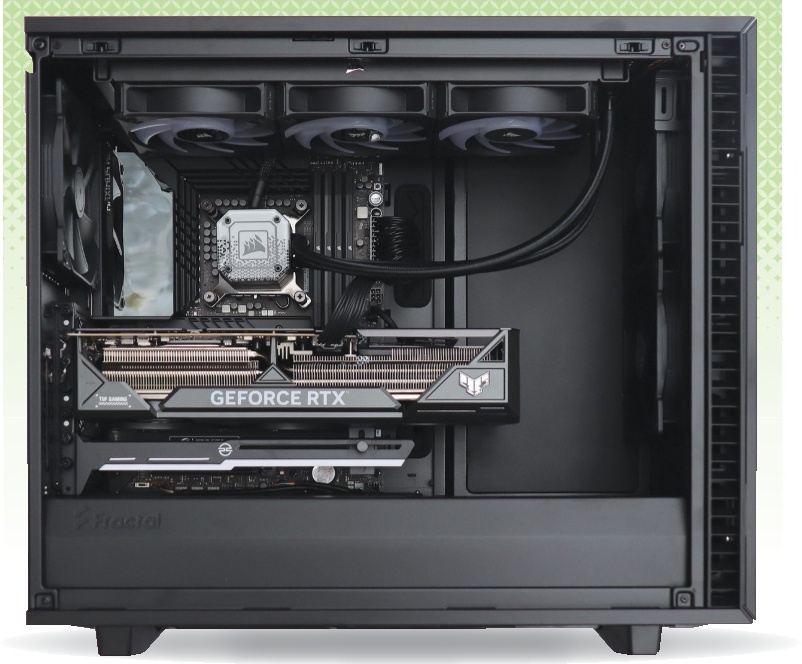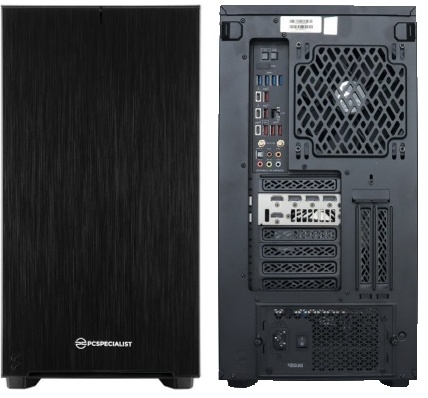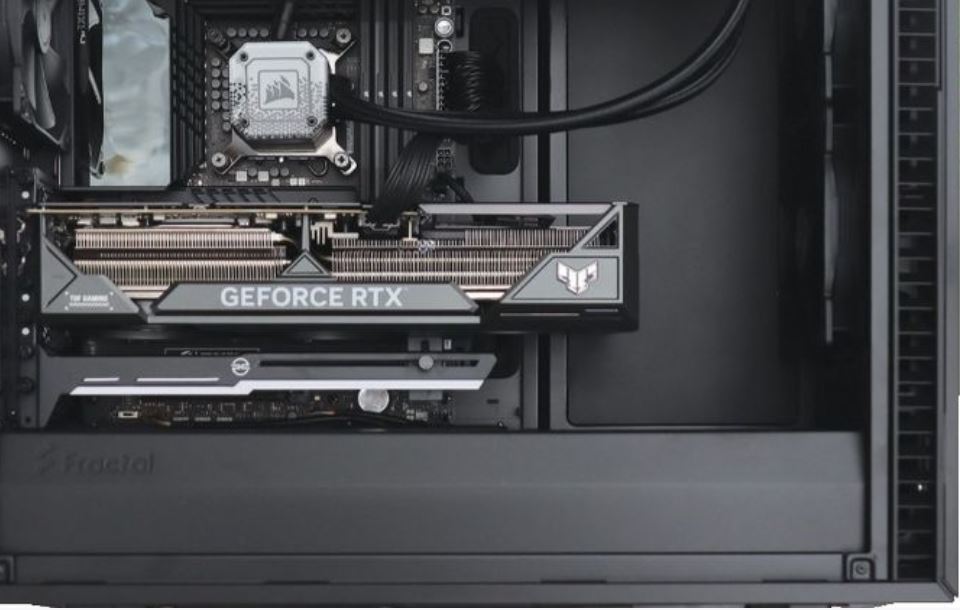Why you can trust TechRadar
This review first appeared in issue 348 of PC Pro.
PCSpecialist takes a unique approach in this month’s Labs by supplying its system with consumer-grade graphics. It’s also the only company to provide secondary storage along with a main drive. So this workstation has a lot in common with a high-end gaming rig; if you design games for a living, this could be exactly what you want.
The CPU is unquestionably potent. This is a 13th generation Intel Core i9-13900K with 24 cores. Eight of these are P-cores with a 3GHz base clock rising to 5.8GHz on maximum boost with Hyper-Threading, while the other 16 are E-cores that operate at 2.2GHz or boost to 4.3GHz, but without Hyper-Threading. So you still get 32 threads like the 16-core AMD CPUs, but 24 of these are full physical cores not virtual ones.
Since Intel Core i9 processors have supported DDR5 memory for a couple of generations now, PCSpecialist has opted for this RAM type, offering 5,200MHz DIMMs. But it has gone further than this – much further. This system includes an incredible 192GB, which is the maximum supported by the Asus ROG Maximus Z790 Hero motherboard. This is supplied as four 48GB modules, although this isn’t a quad-channel system. It’s safe to say that you won’t be needing to upgrade the memory on this system at any point during its useful lifetime.

Now we get to the elephant in the room: the consumer-grade graphics. This is cheaper than the professional equivalent, meaning you can get more power for your money. In fact, PCSpecialist has opted for an Asus TUF GeForce RTX 4090 OC Edition, which is the most powerful consumer GPU currently available. This provides 9,728 CUDA cores, almost as many as the Nvidia RTX A6000, but the 4090 has a newer GPU core design and runs at a much higher clock speed, so promises significantly higher raw processing power – of which more later.
The trusty Fractal Design Black Solid chassis is supplied to house all these components. This isn’t as big as the XL, but still has plenty of space inside and options for storage upgrades. There are six 2.5in/3.5in bays included, with up to 14 possible, and two 2.5in trays as standard, but four possible. PCSpecialist opts to use an M.2 slot for NVMe SSD main storage, but also uses one of the 3.5in bays for a conventional hard disk.
The SSD is a Samsung 990 Pro running at PCI Express 4 speeds. It delivered sustained reading of 7,404MB/sec and writing speeds of 6,818MB/sec, which are good for non-PCI Express 5 storage. The hard disk is a 4TB Seagate IronWolf Pro 7,200rpm mechanical hard disk, offering 260MB/sec reading and 257MB/sec writing. This is pedestrian throughput compared to the SSD but fast for a hard disk, and the extra storage will be handy for greedy media such as 8K video.

The Intel Core i9 CPU is very much in its element with everyday tasks. Its overall score of 849 in the PC Pro benchmarks is the joint fastest we’ve ever seen, particularly aided by the multitasking score of 1,057. However, while 35,990 with multicore Maxon Cinebench R23 rendering is superb, Armari’s AMD Ryzen 9 7950X is just ahead, and CPU rendering with Blender is similarly behind AMD, with the Gooseberry frame taking 312 seconds.
But then there’s that GPU. CUDA-accelerated Blender rendering took an incredible 64 seconds, and the LuxMark 3.1 score of 31,713 is staggering. This is also a supreme accelerator for some – but not all – content-creation viewsets. Running SPECviewperf 2020 3.1, the GeForce 4090 managed 316 in 3dsmax-07 and 792 in maya-06. This is a brilliant card for 3D animation. However, while catia-06 saw 165 and solidworks-07 a jaw-dropping 732, snx-04 could only reach 54.57.
If you’ll be running engineering workloads, in particular Siemens NX (represented by snx-04), you’re best avoiding a system with consumer-grade graphics like the Onyx Pro. But if you’re a game designer or 3D animator utilizing GPU rendering, this is a phenomenally powerful machine, and comes highly recommended.
Dr James Morris has worked as a technology journalist for over 25 years, including spending nine years on the staff of market-leading computer magazine PC Pro, the last five of which were as the publication’s editor. He specializes in enterprise-grade software and hardware, with a particular focus on content creation.
What is a hands on review?
Hands on reviews' are a journalist's first impressions of a piece of kit based on spending some time with it. It may be just a few moments, or a few hours. The important thing is we have been able to play with it ourselves and can give you some sense of what it's like to use, even if it's only an embryonic view. For more information, see TechRadar's Reviews Guarantee.
You must confirm your public display name before commenting
Please logout and then login again, you will then be prompted to enter your display name.

